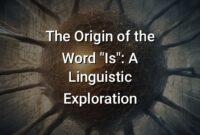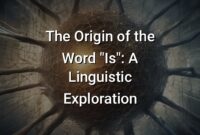ghno nkog ffroeohs gnanbik presents a fascinating linguistic puzzle. This seemingly nonsensical phrase invites exploration into the realms of cryptography, linguistics, and even creative writing. Is it a coded message, a deliberate misspelling, or perhaps a fragment of a fictional language? The ambiguity inherent in the phrase fuels a rich investigation into its potential origins, structure, and ultimately, meaning. We will dissect its components, analyze its structure, and explore various interpretations, revealing the captivating layers of mystery embedded within.
Our analysis will encompass a multifaceted approach, beginning with a phonetic breakdown and progressing to structural analysis, where we will examine potential word segmentation and letter frequency. Contextual exploration will consider potential scenarios where such a phrase might appear, comparing its structure to known patterns in cryptography and code systems. Finally, we will delve into visual representations and explore how different typographic styles and arrangements can influence interpretation, culminating in a discussion of potential meanings and hidden messages.
Visual Representation and Interpretation
The seemingly nonsensical phrase “ghno nkog ffroeohs gnanbik” presents a unique challenge for visual representation. Its inherent ambiguity allows for a wide range of interpretations, making the design process both intriguing and complex. The visual approach must grapple with the lack of inherent meaning, relying instead on suggestive forms and typographic techniques to evoke a sense of mystery and intrigue.
Typographic choices significantly impact how the viewer perceives the phrase. Different fonts can convey vastly different moods and connotations. For instance, a bold, sans-serif font might suggest modernity and technological advancement, while a script font could evoke a sense of age-old mystery or secrecy. The arrangement of the words also plays a crucial role; a linear arrangement implies a straightforward, perhaps even mundane, message, whereas a more fragmented or layered arrangement would highlight the phrase’s enigmatic nature.
Typographic Styles and Arrangements
Several design approaches could be employed. One option involves using a stark, minimalist sans-serif font like Helvetica in a single, unbroken line. This approach would emphasize the phrase’s inherent strangeness by presenting it in a clean, almost clinical manner, highlighting the unusual combination of letters. Conversely, a more expressive approach might involve using a highly decorative font, perhaps even incorporating glyphs or symbols that aren’t standard alphabetic characters. This would heighten the sense of mystery and the potential for hidden meaning. A third approach could involve breaking the phrase into segments, each rendered in a different typeface and size, visually representing the fragmentation of meaning. This could be further enhanced by using color variations or unusual kerning (spacing between letters).
Influence of Spacing and Capitalization
Altering the spacing and capitalization of the phrase dramatically changes its visual impact and potential interpretation. Wide spacing between words or letters can create a feeling of distance and isolation, emphasizing the phrase’s unusual nature. Conversely, tight spacing might suggest a sense of urgency or secrecy. Similarly, capitalization can be used to draw attention to specific words or syllables, potentially hinting at underlying structure or meaning that is otherwise obscured. For example, capitalizing only the first letter of each word (“Ghno Nkog Ffroeohs Gnanbik”) could suggest a title or proper noun, while capitalizing individual letters in a seemingly random pattern (“GhNo NkOg FfRoEhS GnAnBiK”) could emphasize a hidden code or cipher.
Illustrative Image Representation
An illustrative image representing the phrase’s ambiguity and complexity could depict a swirling vortex of abstract shapes and textures. The colors would be muted and somewhat desaturated, evoking a sense of unease and mystery. The shapes themselves would be irregular and fragmented, reflecting the fragmented nature of the phrase’s meaning. Textures could range from smooth, almost glassy surfaces to rough, almost abrasive textures, reflecting the dual nature of the phrase—at once smooth and seemingly comprehensible on the surface, yet rough and incomprehensible at a deeper level. The overall composition would be dynamic and unsettling, leaving the viewer with a sense of unease and intrigue, mirroring the enigmatic quality of the phrase itself. The central vortex might subtly shift in color or intensity, suggesting that the meaning of the phrase is not static but ever-changing and fluid.
Closing Notes
The enigmatic phrase “ghno nkog ffroeohs gnanbik” resists easy categorization, remaining a captivating enigma even after thorough analysis. While definitive meaning remains elusive, the journey of deciphering this phrase has illuminated the intricate relationship between language, structure, and interpretation. The ambiguity itself becomes a powerful tool, sparking creativity and highlighting the boundless potential for hidden meanings within seemingly random sequences of letters. Further research, perhaps incorporating advanced linguistic tools or focusing on specific contextual clues, could potentially unlock its secrets, but for now, the mystery persists, inviting continued exploration and speculation.




